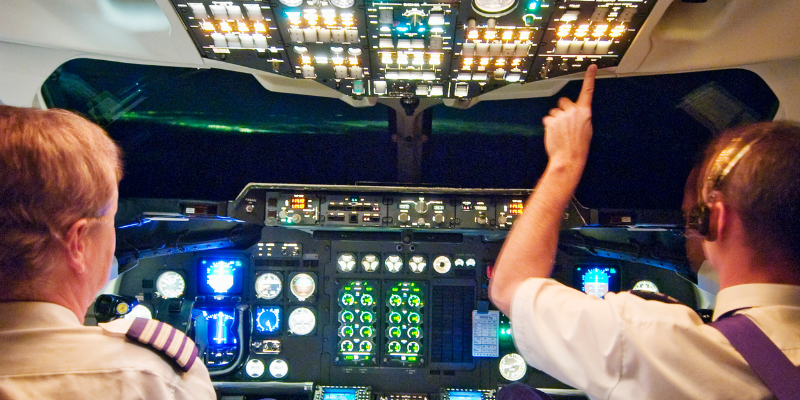Communication Technology in Airplanes
The world of aviation has come a long way since the Wright brothers’ first powered flight in 1903. Today, airplanes are not just marvels of engineering, but also sophisticated hubs of communication technology. Whether you’re a passenger browsing the internet at 30,000 feet or an air traffic controller managing a busy airspace, modern aviation relies heavily on advanced communication systems. In this blog, we’ll explore the communication technology used in airplanes, highlighting the key components and their significance in aviation.
- Cockpit Communications
The cockpit of a modern airplane is a nerve center of communication technology. Pilots rely on a range of systems to communicate with air traffic control, fellow crew members, and ground personnel. Here are some key components:
a. Radios: Radios are the backbone of cockpit communication. VHF (Very High Frequency) radios are used for short-to-medium range communication, while HF (High Frequency) radios are employed for long-range communication, especially over remote or oceanic areas.
b. ATC Transponders: Air Traffic Control (ATC) transponders are essential for radar communication. They send signals that allow controllers to track the aircraft’s position, altitude, and other vital information.
c. ACARS: The Aircraft Communications Addressing and Reporting System (ACARS) is a digital datalink system that allows aircraft to communicate with ground stations. It’s used for various purposes, including sending messages to airline operations and receiving weather updates.
d. Satcom Systems: Satellite communication systems ensure that pilots and crew can stay in touch with the ground even when flying over remote areas with no terrestrial communication infrastructure.
- Passenger Communication
Passengers expect to stay connected during their flights, and airlines have responded by offering in-flight connectivity. Key technologies include:
a. Wi-Fi: Many airlines offer in-flight Wi-Fi services, which rely on a combination of satellite and ground-based communication systems to provide internet access to passengers.
b. Seatback Screens: Airlines often equip their planes with seatback screens for in-flight entertainment, which are connected to a central system that streams movies, TV shows, and more.
c. Mobile Networks: Some airplanes are equipped with onboard cellular technology that allows passengers to use their mobile devices for calls, texts, and data usage, even while cruising at high altitudes.
- Emergency Communication
In case of emergencies, quick and reliable communication is paramount. Airplanes are equipped with various emergency communication systems:
a. ELT (Emergency Locator Transmitter): ELTs automatically transmit distress signals on designated frequencies to alert search and rescue services in the event of a crash.
b. Emergency Radios: In the event of a catastrophic failure or hijacking, pilots can use dedicated emergency radios to communicate with ATC and relevant authorities.
- Maintenance and Health Monitoring
Modern airplanes have advanced health monitoring and maintenance systems. These systems use communication technology to send real-time data to maintenance crews and airlines for proactive maintenance and safety management.
a. Data Link: Aircraft systems can transmit data to maintenance crews on the ground, allowing them to diagnose issues and prepare for necessary repairs before the plane even lands.
b. Engine Health Monitoring: Aircraft engines are equipped with sensors that monitor their performance in real-time. Data from these sensors is sent to the ground for analysis.
Conclusion
Communication technology in airplanes is a complex and vital part of aviation. It ensures the safety, comfort, and operational efficiency of flights. From cockpit communication systems that keep pilots in touch with air traffic control to in-flight Wi-Fi for passengers, these technologies continue to evolve and shape the way we experience air travel. As aviation technology advances, we can expect even more innovative communication solutions to enhance the future of air travel. So, the next time you’re soaring through the skies, take a moment to appreciate the marvel of communication technology that keeps you connected to the world below.



